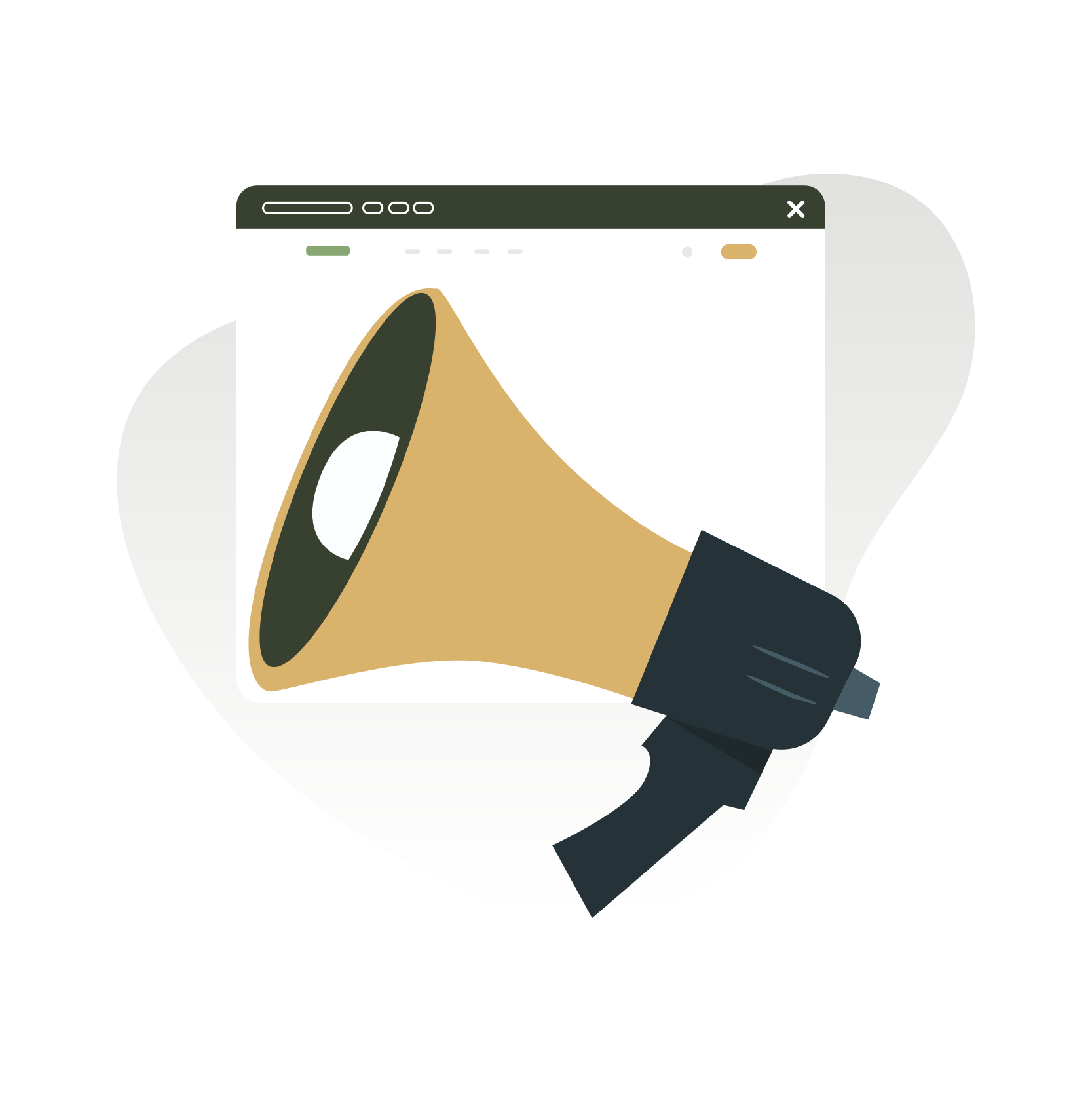
I hope you enjoy reading this blog post.
If you want me to do your marketing for you, click here.
Marketing Tactics
Strategy Vs. Tactics
The word strategy derives from the ancient Greek word stratēgia, meaning ‘generalship.’ Today, business strategies pay homage to the word's origin; it’s a plan for succeeding over competitors. Strategy is the plan by which you achieve your objective; tactics are a series of actions to achieve your strategy.
“All men can see the tactics whereby I conquer, but what none can see is the strategy out of which victory is evolved.”
Strategy is often a single key idea or concept that can be communicated in a couple of sentences; a confusing strategy often indicates a poorly articulated one. The strategy focuses on long-term objectives, while tactics achieve short-term results. Success is a result of strategy and tactics.

See how I can help your tea or coffee business sell more products.
- Strategy: Get a clear direction with insightful marketing and branding strategies.
- SEO: Get colossal amounts of SEO traffic. See actual results.
- Content Marketing: I create epic content that gets you traffic, shares, and links.
- Paid Media: effective paid advertising with clear ROI.
A good strategy provides a clear roadmap. It establishes guiding principles that define people's specific actions and priorities to achieve desired goals.
"To be an enduring, great company, you have to build a mechanism for preventing or solving problems that will long outlast any individual leader."
|
Tactical Alignment |
|||
|
Why |
What |
How |
Who |
|
Vision & Incentives |
Mission & Goals |
Strategy |
Value Network |
Developing a strategy first requires clarity on your mission and goals and understanding who you create value for in the market (e.g., suppliers, customers, employees, and investors).
Business plans establish and articulate a business strategy, including strategic planning and the goals and objectives required to achieve the intended success and secure a competitive advantage.
Progress toward such goals is tracked with metrics. Strategy-based metrics fall into two categories: goal-based and policy-based.
- Goal-based: 50% of your tea companies customers order products from your website more than once every six months.
- Policy-based: If a customer has not purchased a product on our website within three months, we send them a drip campaign that gives them a 10% off coupon.
Within digital marketing, specific strategies are developed for channels and platforms which support your overall objectives. For example, strategies and tactics may be developed for gaining visibility on search engines (e.g., SEO strategy and a pay per click (PPC) strategy).
What Are Marketing Tactics?
Marketing tactics are the strategic actions that direct the promotion of a product or service to influence specific marketing goals. Your marketing tactics should be an extension of your marketing strategy and, ultimately, your business strategy.
|
Business Goal |
Improve profitability by focusing on customer lifetime value |
|
|
Business Strategy |
Have the best customer insight |
|
|
Marketing Strategy |
Create and leverage customer relationships |
|
|
Marketing Goal |
Engage with customers earlier in the buying cycle Make customers feel special |
|
|
Marketing Tactic |
Implement display ads using paid advertising Send birthday emails and discounts using email marketing |
|
Content types (e.g., images, videos, blogs, podcasts, or email newsletters) are not tactics.
For example, your strategic business objective may be to increase customer profitability. This may be broken down into two goals: increase the average customer order value, and reduce customer attrition. To accomplish this goal, you may place a heavy tactical emphasis on email marketing, which relies on newsletters. This may be a key part of your content marketing strategy.
Digital marketers use tactics like banner ads, search engine marketing (SEM), search engine optimization (SEO), email marketing, blogs, and websites to deliver on a digital marketing strategy.
Within digital marketing, the line between strategy vs. tactics is blurred. Specific strategies are developed for channels and platforms which support your overall objectives. For example, strategies and tactics may be developed for gaining visibility on search engines (e.g., SEO strategy and a pay per click (PPC) strategy).
Content types are not limited to a single marketing tactic. For example, if your long-term strategic objective is to gain market share within your market segment, you may focus on gaining visibility in search results for topics of interest to your target audience. Your marketing plan may focus heavily on blog posts.
By contrast, your digital marketing strategy may focus on scaling content marketing by reducing the cost to create content. You may focus on leveraging your existing blog posts to create white papers or ebooks in such a scenario. You then construct marketing campaigns that use these substantial pieces of content for lead generation, and promote these assets with digital PR tactics, like guest posting.
What Are Some Digital Marketing Tactics I Can Implement To Grow My Business?
In some respects, each facet of digital marketing is a tactical execution of your marketing strategy.

Yet each channel, platform, or means of digital marketing is unique; it requires a channel-specific strategy executed through marketing techniques and granular tactics.
Each facet of digital marketing is a tactical execution of your marketing strategy.
"DAVIDs TEA's goal is to solidify our position as a digital-first, industry-leading provider of on-trend, high-quality loose-leaf tea, tea accessories, and gifts."
Yet each channel, platform, or means of digital marketing is unique; it requires a channel-specific strategy, executed through various marketing techniques and granular tactics.
We're going to discuss each major online marketing tactic within the context of four categories:
Effective marketing leverages each method of marketing to promote and sell products or services.
“Integrated marketing offers opportunities to break through to consumers in new markets."
Owned Media
What Is Owned Media?
Owned media are online assets that belong to, and are controlled by, a brand. Examples of owned media include a website, email list, or content (e.g., blogs). The more owned media a business has, the greater its explicit control in reaching and influencing customers and followers.
Website
Your website, a set of related web pages located under a single domain name, is a powerful owned media asset. By developing content and improving web pages, you can increase your revenue by helping searchers find your products and services.
Tactics to improve websites often include creating blog posts, engaging about pages, or compelling product pages. Your website is the distribution channel for your content marketing efforts.
The website efficacy can be improved with other marketing tactics, such as using search engine optimization (an earned media tactic) or email marketing (an owned media tactic).
When assessing the tactical success of your website, consider revenue-driving conversions (e.g., sales, call bookings), engagement metrics (e.g., dwell time, bounce rate), and traffic.
"Websites promote you 24/7: No employee will do that."
Email List
An email list is an example of an owned asset; it belongs to your company. Email marketing requires an email service provider (ESP) to deliver marketing messages to your email list. Email marketing, sending commercial messages using email, lets your business connect with its target audience directly.
“Email has the unique ability to create valuable, personal touches at scale.”
It’s effective at turning prospects into customers and can be among the most profitable channels for business.
Email marketing newsletters can be categorized into three foundational groupings.
- Nurture sequences
- Engagement sequences
- Sales sequences
However, other email marketing campaigns (e.g., abandoned cart sequences, winback campaigns) are often built to better achieve a brand's marketing goals. Implementing these types of email sequences requires monitoring metrics, some of which are open rates, click through rates, and unsubscribe rates.
When assisting your email list’s tactical performance, consider growth and decay metrics (e.g., growth rate, unsubscribes), revenue-driving conversions (e.g., sales), and engagement (e.g., open rate, conversion rate).
“Focus on growing your list all of the time as newer subscribers are more engaged, adding to healthier open rates and ROI.”
Content
Content is the foundation of an owned media strategy. The key to successfully leveraging content is creating engaging, relevant, and valuable content. A targeted, well-produced piece of content (e.g., blog post) can bring in many leads. When possible, brands should personalize the user's experience of consuming content.
Content marketing is the creation and sharing of online material that does not explicitly promote a brand but stimulates interest in the brand's products or services. It uses owned media assets (e.g., blogs, videos, images, newsletters, or podcasts) to connect with the brand’s target audience.
“Content marketing is the creation and sharing of online material that does not explicitly promote a brand but stimulates interest in the brand's products or services. It uses owned media assets (e.g., blogs, videos, images, newsletters, or podcasts) to connect with the brand's target audience.”
- Blogs are the most common form of content marketing and they reside on a company's website, within complete control of the brand.
- Videos are owned media assets, but they are often published on other platforms (e.g., YouTube). As such, brands may not always have complete control over the video (e.g., YouTube may remove your video).
- Images are owned assets that companies can develop. Other people or brands may attempt to use these owned assets without permission, but tools exist to help you identify unauthorized usage of your images (e.g., TinEye). In such cases, brands can require attribution, payment, or removal of the picture. They may take legal action in some cases.
- Newsletters are a form of marketing message that you send to those on your email list.
- Podcasts are owned audio media distributed on other platforms (e.g., Podbean) and can be embedded in your website.
When assessing how your content is performing, consider reach metrics (e.g., traffic, impressions, shares), engagement metrics (e.g., dwell time, views, comments). Consider assessing how media connects to valuable business conversions (e.g., email list growth, sales).
“One of the best ways to sabotage your content is to not tie it to your goals. Know why you're creating content.”
Paid Media
Paid media is a means of promotion by which brands gain exposure for a price. Brands can effectively expand reach and drive traffic with this tactic. Common tactics of paid media include sponsored social media posts, paid search, video ads, display ads, and other types of media.
Paid advertising can be an effective part of your digital marketing strategy, exposing your brand and products or service to your target audience.
“What really decides if consumers buy or not to buy is the content of your advertising, not its form.”
Pay Per Click (PPC)
Pay per click (PPC) can be a means by which you can promote content or products in the search results. You pay when someone clicks on your content; the common tactical applications include Google Ads and retargeting and display ads.
Google shows multiple ads (e.g., four ads) rather than just one, diminishing the return of earned media. Organic links may be buried below numerous ads. Consequently, companies experience pressure to use paid media; this makes the market competitive, driving up the price of ads.
Marketers can assess the success of their PPC advertising tactics by considering variables such as cost per click (CPC), and cost per acquisition (CPA), return on ad spend (ROAS), click through rate (CTR), and conversion rate.
"When you set up any campaign, be as specific as possible to the person you want to click that ad."
Display Ads
Display ads provide opportunities to engage users with appealing ad formats (e.g., responsive display ads, image ads). Display ads help companies capture someone's attention earlier in the buying cycle.
The success of using display ads as a marketing tactic can be measured by impressions, cost (e.g., cost per thousand (CPM)), click through rate (CTR), and view-throughs.
The click through rate of display ads (e.g., banner ads) is low; the average is around 0.25% (Wordstream, 2018). As such, view-throughs may be a more meaningful metric for assessing the success of this marketing tactic. View-throughs measure users who have seen your ad, who then visit your website within a certain period.
"The number of clicks on display ads is not an accurate predictor of the effectiveness of online display ads."
Retargeting
Retargeting campaigns remind your website visitors of your products and services after they leave your website without buying. Retargeting ads allow you to stay connected to your organic audience; they are a tactic for businesses that already have a following (e.g., 100 website visits a month or more).
The success of your retargeting ads can be measured by lead nurturing, view through conversions, site visits, and click through rate, cost, and in some cases, lead conversions (i.e., cost per lead (CPL)).
Remarketing is often used to promote best-selling goods or services, introduce new offerings, move inventory, and build brand awareness. It uses the email addresses of those on your email list to promote your marketing messages.
“When people look for products and services online, they seldom convert on their first visit. Depending on the industry, 95 to 98 percent of people leave a website without taking the desired business action.”
Social Media Ads
Paid social refers to social media advertising. It’s when brands pay social media platforms (e.g., Facebook, LinkedIn, Twitter, YouTube) to have their ads shared with specific audiences. The audiences chosen are most likely to be interested in what’s promoted (i.e., product, service, content).
There are different types of social media platforms on which companies can serve their ads:
- Social networking (e.g., Facebook, LinkedIn, Google+)
- Microblogging (e.g., Twitter, Tumblr)
- Photo sharing (e.g., Instagram, Pinterest, Snapchat)
- Video sharing (e.g., YouTube, TikTok)
Companies use social media ads to achieve various brand goals (e.g., awareness, conversions); the metrics used to assess the successful implementation of social media advertising vary. Consider metrics that monitor financial variables (e.g., cost per click (CPC), return on ad spend), click through rate (CTR), and conversions (e.g., sales, downloads).
|
Benefits Of Organic Vs. Paid Social Media |
||
|
Benefits Of Organic |
Benefits Of Paid |
Benefits Of Both |
|
Brand awareness |
Reach a larger audience |
Gain new customers and followers |
|
Customer service |
Target ideal customers |
Promote quality content |
|
Relationship building |
Drive leads and conversions |
Research your target audience |
“Nobody counts the number of ads you run; they just remember the impression you make.”
Native Advertising
Native advertising is a paid marketing tactic in which the placement of your paid content blends in with the surrounding context. In-feed ads, search and promoted listings, and content recommendations are examples of implementing native advertising as a marketing tactic.
Native advertising can achieve marketing goals (e.g., build brand awareness, increase engagement, drive sales); metrics must be monitored in the pursuit of such goals. Consider tracking metrics such as impressions, click through rate (CTR), unique visitors, bounce rate, and conversion rate.
“Native is important to Google because we think native advertising will be the future of advertising. It benefits everyone in the ecosystem; the users, the publishers, the advertisers.”
Sponsorship
Sponsorships provide financial or in-kind support for activities. It is a paid marketing tactic that exchanges monetary value for your brands’ representation during an event. Sponsorships don't directly promote the brand, instead, brands align themselves with their audience by supporting a cause their target audience cares about.
Brands often use sponsorship as a marketing tactic, including applications such as sponsoring a YouTube video, podcast, or industry event.
Sponsorship is a long-term marketing tactic, and success can be challenging to measure. However, the successful implementation of sponsorship as a marketing tactic can be assessed in a few ways. Consider monitoring direct traffic and the search volume of your brand name during life events (e.g., webinars, trade shows) that you sponsor. The acquisition of backlinks can also indicate success.
Earned Media
Earned media, or earned content, is material about you or your business that you haven't created or paid for.
Earned media always involves a third party distributing the content (e.g., newspaper, search engine), and it increases a brand’s potential reach to customers and followers.
“Free publicity and word of mouth is probably the best and cheapest form of advertising. Learn to use it to your advantage.”
Search Engine Optimization (SEO)
Search engine optimization (SEO) improves the quality and quantity of traffic to a website or a web page from search engines.
SEO is earned media because your content must satisfy the 200+ ranking factors of search engines like Google, and meet searchers’ intent, needs, and preferences. When businesses invest in SEO, they are helping search engines understand and present their content.
SEO primarily focuses on organic traffic (rather than direct or paid traffic sources. Organic traffic and page authority is generated on a page-by-page basis, making each an important metric to monitor. However, in aggregate, your website’s domain authority and expertise, authority, and trustworthiness (E-A-T) reflect the strength and credibility of your site. As such, these broader metrics merit some consideration.
When measuring how effectively you're implementing search engine optimization (SEO) tactics consider these four indicators:
- Traffic,
- Engagement metrics (e.g., dwell time, pages per session, bounce rates),
- Rankings (e.g., keyword ranking, search engine results page (SERP) performance), and
- Authority (e.g., page authority, domain authority).
“If you are trying to grow your qualified search traffic, you have to combine your content marketing with your SEO efforts.”
Link Building
Link building acquires hyperlinks from other websites to your own; a hyperlink, usually just called a link, is how users navigate between pages on the Internet. It’s a key element of SEO.
Link building is earned media because those websites that link to your content must see value and relevance in it. Your content must meet the quality standards of other parties (e.g., press, niche leaders, general public) to receive a link. Link building is notoriously tricky, and digital marketers have devised many link building tactics to achieve this end (e.g. infographic link bait, research, ego bait articles).
Assess your tactical use of link building by considering metrics that reflect opportunity (e.g., the number of new link opportunities), execution (e.g., number of outreach emails sent, response rate), and outcome (e.g., new links).
Word of Mouth (WOM)
Word of mouth marketing (WOMM) is the most valuable form of marketing; it creates high levels of trust and action. It is the primary factor behind 20 to 50 percent of all purchasing decisions (McKinsey, 2010).
Word of mouth endorsements are traditionally spoken but may be delivered digitally (e.g., reviews) as word of mouth.
To position your brand well in word of mouth marketing you must offer means (e.g, storytelling), motive (e.g., a great customer experience), and opportunity (e.g., social media, reviews).
Word of mouth marketing is challenging to master; only 6% of marketing executives believe they have mastered it (Whitler, 2021). However, you can track metrics that indicate if and how word of mouth is driving your business. For example, consider tracking brand mentions (e.g., brand mention reporting) and direct traffic.
“Word of mouth is the primary factor behind 20 percent to 50 percent of all purchasing decisions.”
Organic Media Coverage
Media coverage refers to all content (e.g., blog articles, podcasts, videos, RSS feeds) where your brand, or goods or services, are discussed or shown. Such coverage is produced by individuals or organizations other than yours. Brands often seek to influence their organic media coverage by incorporating it into their digital PR strategy.
Organic media coverage refers to the coverage given to your brand by large publishers (e.g., Huffington Post) and small niche publishers (e.g., tea bloggers, coffee bloggers). Brands and business owners can use organic media coverage to confer legitimacy and attention to their business.
You can gauge how effectively your marketing tactics are generating organic media coverage through monitoring (e.g., brand mention reporting, reviewing backlinks for notable publisher names).
Organic media coverage also includes organic social media, which refers to the free content (e.g., posts, photos, video, memes, stories) that users share on their feeds. It’s a means by which you can nurture connections with your customers at scale. You can assess how effectively your tactical actions contribute to organic social media coverage by monitoring visibility metrics (e.g., reach, impressions and shares).
Get Yourself Featured
If you're in the coffee or tea industry, I invite you to share your insights and opinions about one of the marketing tactics discussed.

Use Marketing Tactics To Reach Your Goal. Purchase your digital marketing strategy and grow your business.


I hope you enjoy reading this blog post.
If you want me to help you to sell more coffee and tea, book a call.






















